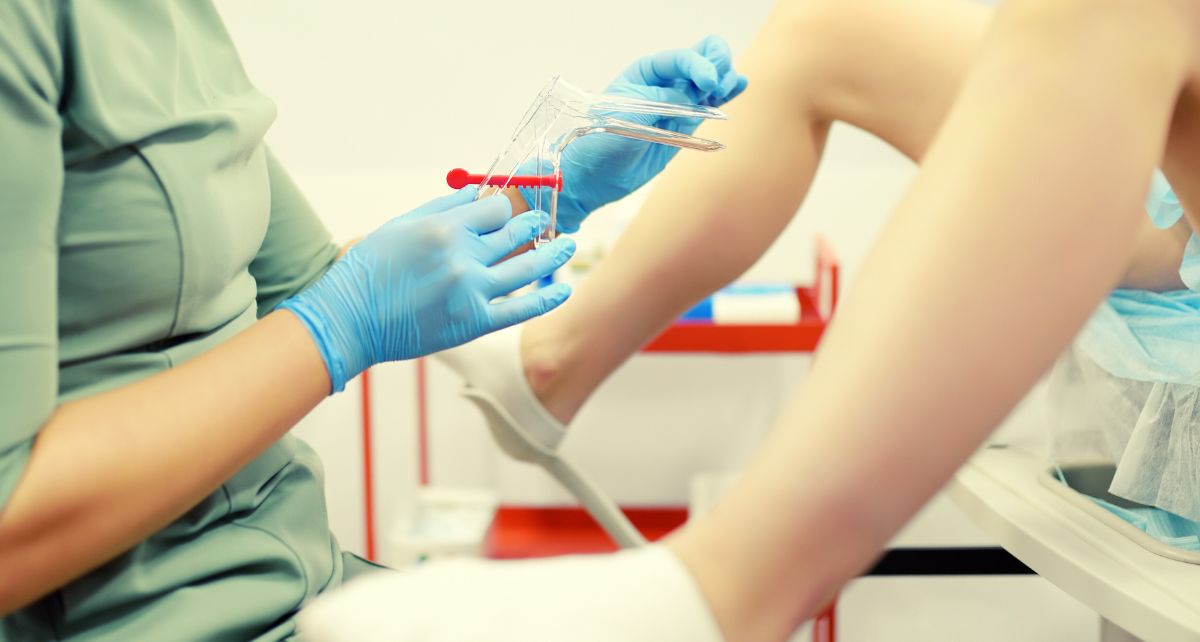I had abnormal pap results. Here’s what happened next.
I was walking home from work, sun on my face, when I got the call. The results of my pap test had come in, and the results were abnormal. Not normal. Not as expected. Abnormal.
The sun felt brighter. Hotter. Each step that followed suddenly had extra weight. Would this be one in a series of final walks? My legs felt like jelly, and I felt shaky as I prayed to live. I wasn’t done living yet. My mind tends to go to extremes — if things aren’t right, they feel very wrong.
I was 30. In retrospect, I had nothing to worry about. But that was not explained to me. I was asked to come into the cervical cancer clinic at my earliest convenience. I thought I was dying.
At my appointment, I was handed a pamphlet about abnormal pap tests and their causes. It listed multiple sexual partners, drinking, drugs, and smoking. Basically, if you were a party girl, expect to get cervical cancer. This was the early 2000s, and the times were changing. Yet this pamphlet of shame burned in my mind.
“Is this the only way you can get cervical cancer?” I asked the nurse who gave me the brochure. “Because I haven’t had many partners. I don’t smoke and hardly drink.”
“You probably have HPV,” she explained, pointing to a shaded box in the brochure. It said that HPV (Human Papillomavirus) was contracted through sexual intercourse and usually leaves the body in a couple of years. She also added that most sexually active people will contract HPV at some point in their lives.
“But I’ve been married for five years.” She gave me a look that led me to add, “We’re monogamous.” I don’t think she believed me.
It was explained to me that abnormal pap results typically indicate precancerous changes in cervical cells, which are often caused by persistent HPV infections. The next step (at a later date) would be to undergo the LEEP (Loop Electrosurgical Excision Procedure), a treatment designed to remove abnormal cervical cells and, with them, the associated cancer risk. The procedure uses a thin wire loop charged with an electrical current to excise abnormal tissue. Before the procedure, an injection would be administered to ensure it was painless. Easy peasy, right? Except, I don’t recall being given a choice in the matter.
Weeks later, after booking the day off work, I returned to the clinic for my procedure. I sat, feeling exposed, in my flimsy paper dressing gown. My guilty Catholic upbringing weighed heavy on my conscience as I sat there in my own shame for bringing on this abnormality, when another nurse came in to explain how things would go. And, oh, would I mind consenting to student doctors observing the procedure?
“That’s fine,” I said, atoning for my sins. But I was not fine.
What followed felt like something out of a science fiction movie. I lay on a hard surgical bed, my bare feet in cold metal stirrups, my legs spread wide, and a telescope-like contraption pointed at my vulva. During the procedure, five student doctors arrived, each taking turns looking into my pried-open vagina. They were respectful, but I felt humiliated — like I was on display for some alien experiment. I wanted to say, Beam me up, Scotty.
I felt embarrassed, ashamed, and scared. I was outnumbered and had to blindly trust that this was all okay. I wanted to hide and curl up in the fetal position, but instead, I had to lay there, spread eagle.
The procedure itself didn’t last long. And it wasn’t painful. The injection had ensured that. In fact, I felt great afterward. They said something about having injected adrenaline, which helps not only for pain but to inhibit blood flow. I felt on top of the world! I drove home by myself afterward. It seems crazy to me now that I didn’t have my husband or a friend with me for this.
The aftercare didn’t involve much. Just pads, which I hadn’t used in years because they felt so bulky and diaperish. I sure wish joni existed back then. There was some mild discharge after that for a few weeks.
In the end, I can’t help but feel that my experience with LEEP, though terrifying at the time, taught me the importance of advocating for my health, even in the face of fear or discomfort. Maybe my abnormal cells were nothing to worry about, or maybe they were a ticking time bomb — I’ll never know. But I do know this: regular pap smears, while often dreaded, are a lifesaving tool. They’re a chance to catch what might otherwise remain hidden, a chance to stay ahead of what could be life-changing. And HPV? It’s not a reflection of morality or lifestyle; it’s simply a fact of life for many of us.
So, here’s my advice: Get the test. Ask the questions. Take control. Your health is worth it. And as uncomfortable as the process might be, it’s a small price to pay for peace of mind — and for the chance to keep living, fully and fearlessly.
Do you have a story to tell? Email us at hello@getjoni.com.
About the Author:

Wendi Seskus-James
Wendi Seskus-James is a storyteller at heart with over a decade of experience in communications and content creation. As the Content Manager at joni, she’s as passionate about period equity as she is about sharing stories that connect people and spark change. She thrives on bringing creative ideas to life and focuses on creating meaningful connections through stories that matter.
